My daughter, her friend and I were exploring around a giant white pine when we found some feathers…and then some more…and more. Some of them had beautiful, iridescent blue on them. We had a feather mystery on our hands! Before reading on, have a guess at what bird they are from.

I try to be open and flexible enough to notice and use teachable moments – it doesn’t always happen. But, I am almost always curious, love to learn about nature, and am enthusiastic (after coffee). Also, when I explore nature I like to go real slow. I don’t expect to go for a hike when the priority is to get up-close-and-personal with nature. Besides, kids will naturally want to play and explore in one area, rather than move on too fast. So, I decided let’s get into this! My daughter has always been a reverent feather collector, treating feathers like the most-prized and magnificent treasures that they are, and her friend is a naturally curious one, so I was pretty sure they’d be game.
This was a perfect inquiry-based learning opportunity. Inquiry-based learning is about triggering curiousity and asking questions. The teacher doesn’t give the answer (even if they know it). Rather they try to help the student(s) to investigate, and to think thoroughly and critically. For example, one of the girls guessed right away, “They are from a mallard.” I asked why? She said, “because there is blue on some of them”. So I asked, “What about Blue Jays or Black Ducks?” She knew it wasn’t a Blue Jay feather because she had seen those before, and the blue is stripped with black. But, she was curious about the Black Duck. I used the Sibley app (check out this blog post) on my phone to let them see the illustrations, and to compare them to that of the mallard. The pattern of blue-black-white fit the mallard! Then, I asked “What do you think happened?”. Well, we will never really know, but we talked about some possible predators, and that there was a little river nearby.
Later at home, my daughter and I used the U.S. Fish & Wildlife’s Feather Atlas (which is really cool!) to confirm we got it right, and to figure out what part of the body the different type of feathers came from. We did some labelled plumage drawings as well.
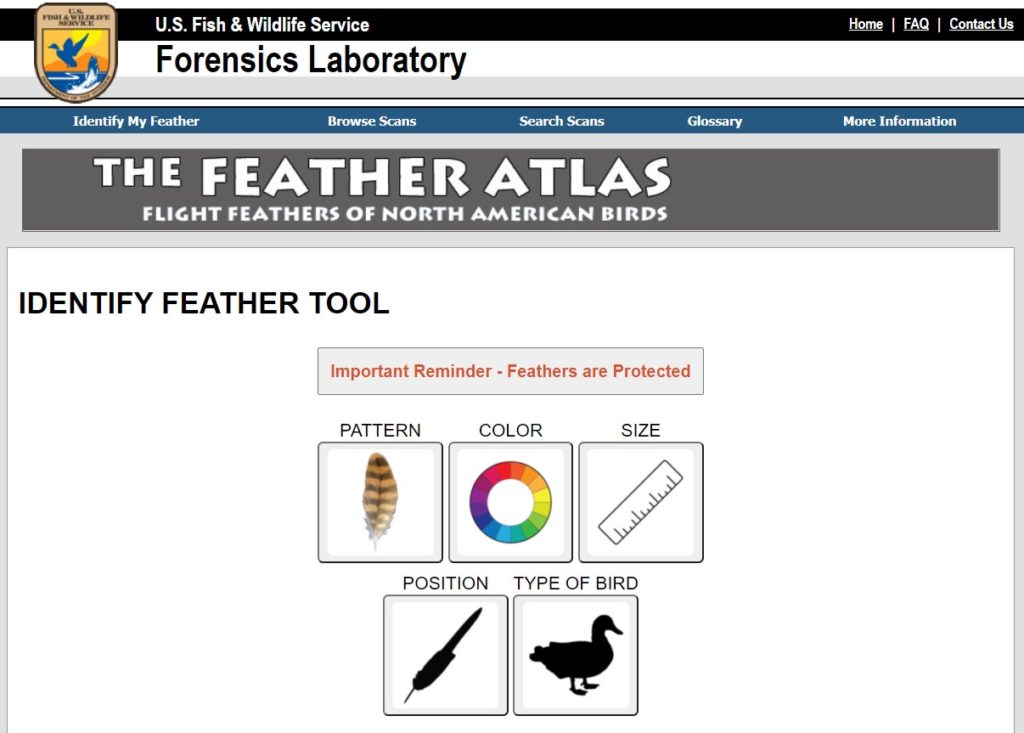
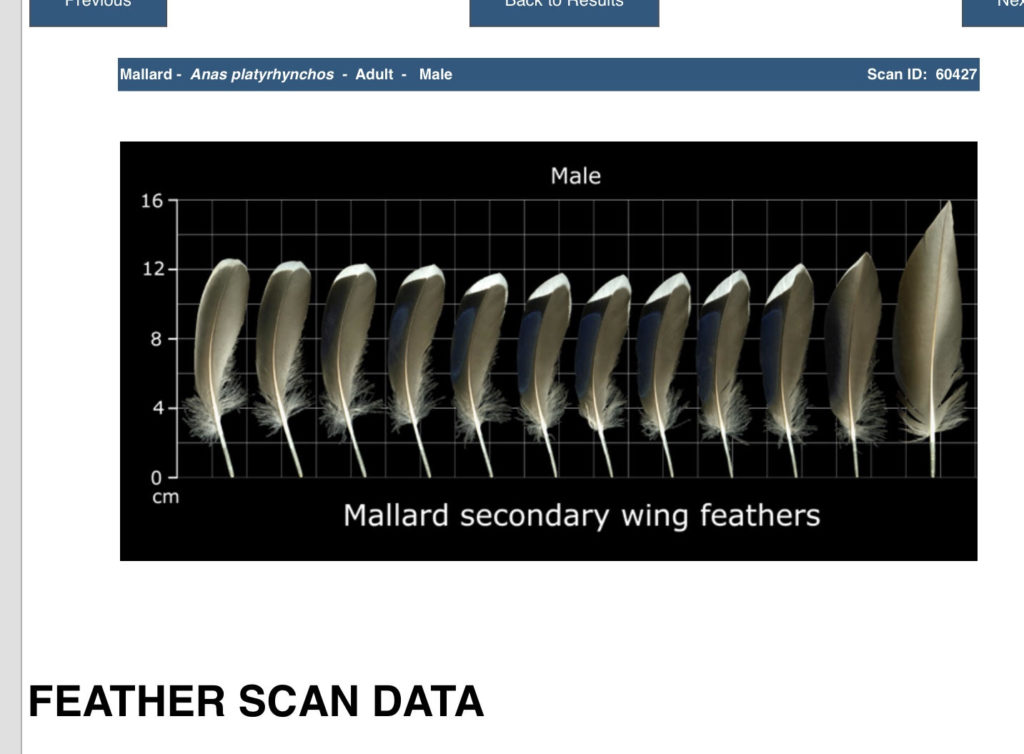
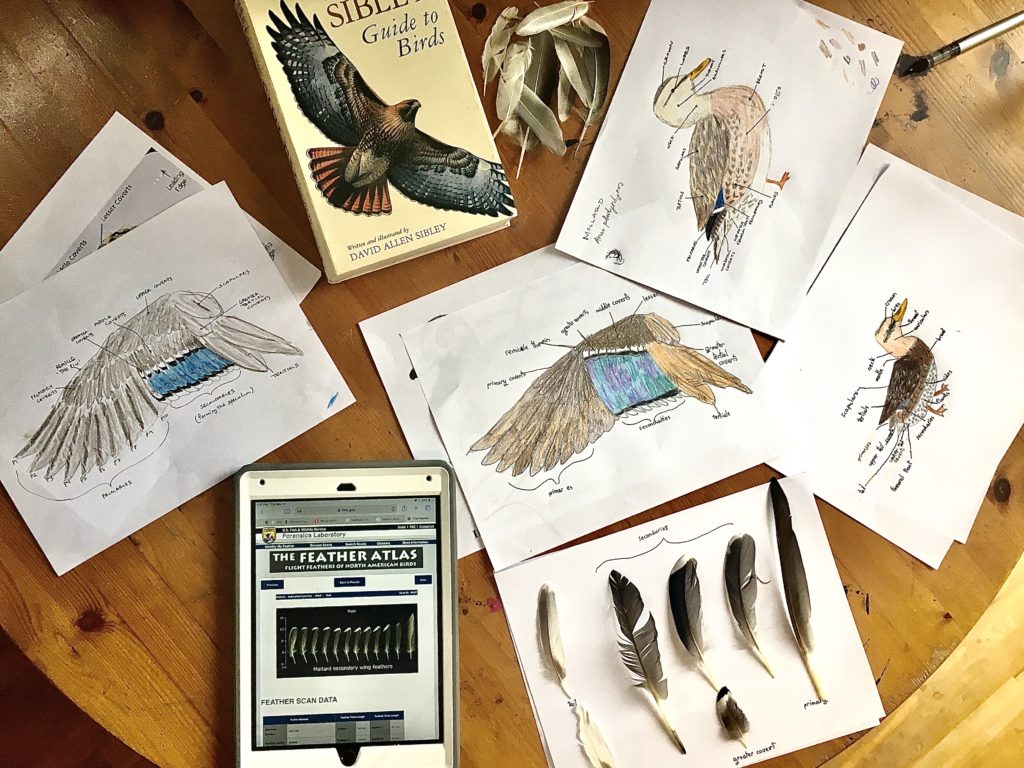
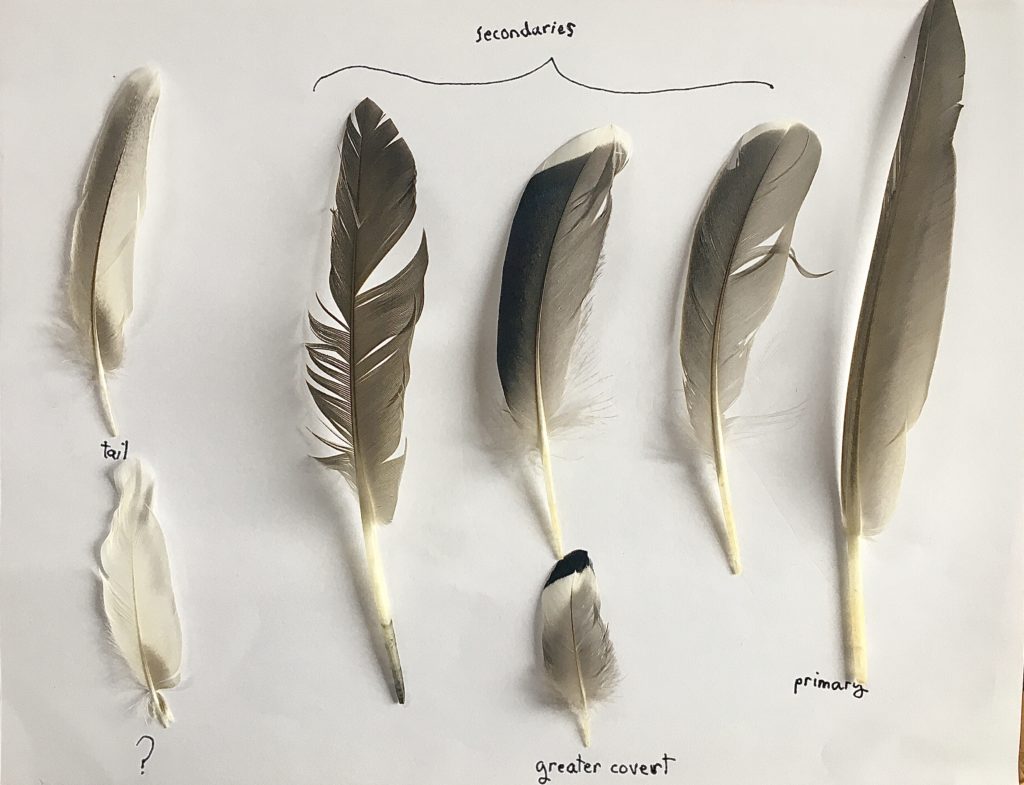
The girls also used the feathers to do the week’s Étude de mots list. They thought writing with feathers and ink was fun (yay for anything that makes Étude de mots fun) and also very Harry Potter-ish (big fans here).
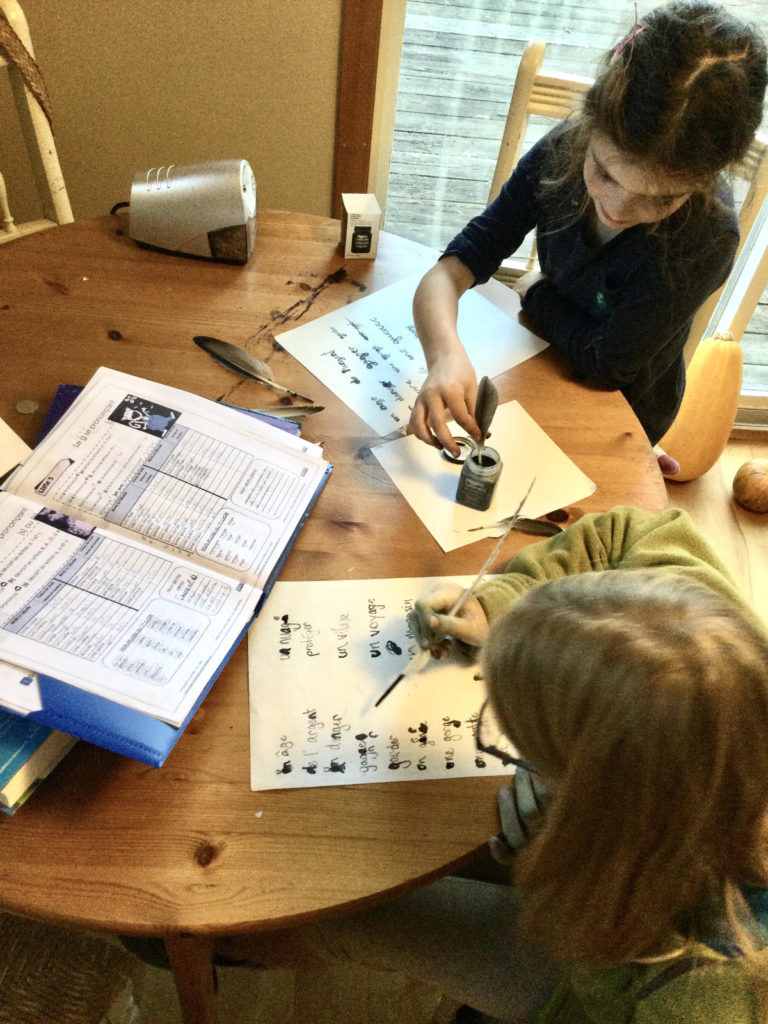
To read about the field apps and field books I recommend, visit this blog post: Field books are for kids too
Some educator-lingo definitions:
**but first a disclaimer**: I think all these inspiring education best practices are WAY easier with one or two students, and are WAY harder with a full class of students with varying interests, abilities and behaviors. Just getting traditional school students out into a nature area can be a feat of justification, logistics, paperwork and preparation. Luckily, some school boards still have Outdoor Education Centres, and some schools have regular Nearby Nature programs. I hope there is more and more of this. Also, I guided my daughter along and showed her what resources we could use, so there was a lot of one-on-one. In other words, there is never any judgement from me if these things aren’t happening. I think classroom teachers are a special breed of super-hero, and I couldn’t do it.
Inquiry-based learning: Inquiry-based learning is a form of active learning that starts by posing questions, problems or scenarios. It contrasts with traditional education, which generally relies on the teacher presenting facts and their own knowledge about the subject. (Wikipedia)
Nature-based learning: Learning with nature, from nature, in nature, about nature and/or for nature. In our homeschool’s case, nature, connection to nature, and what is happening seasonally are overarching and guiding themes. In the early years in particular, there are the duel goals of child-development and nature connection. (My head and Samara Early Learning)
Place-based learning: Place-based learning immerses students and is rooted in what is local – the local environment, flora and fauna, landscapes, heritage, cultures, people, opportunities and experiences, and uses these as a foundation for the study of subjects across the curriculum. (Wikipedia and Promise of Place)
Emergent curriculum: Emergent curriculum is a philosophy of teaching and a way of planning a children’s curriculum that focuses on being responsive to their interests. The goal is to create meaningful learning experiences for the children. (Wikipedia)
A teachable moment: A teachable moment is a situation (often unplanned) that arises and presents the perfect opportunity to teach something. (My head)
Step outside, and keep your eyes and heart open, Kate
